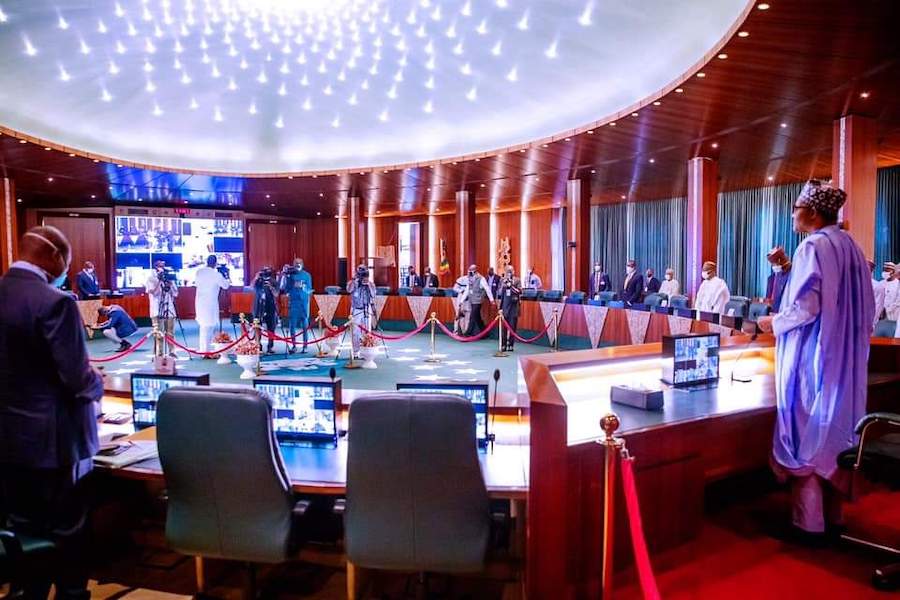This page is about Empire dress and its influence on C19 th Regency Fashion. As a result, mens clothing became more restrained and definite in shape. Gothic ornament began to appear by 1810, and fanciful elements of pastoral dress were also seen (Byrde 24). For women, the high-waisted silhouette in lightweight muslin was the dominant style, while fashionable men looked to the tailors of Britain for a new, refined look. It is because of the countrys internal make-up. In order to situate the anthologys place within an existing body of literature, a short historiography would have also been useful. 13 - Artist unknown (British). Originally from Kolkata, Prerna loves staying up to date in current fashion and culture trends, be it movies, music, or social media. A Running Boy, Marcus Holst von Schmidten, 1802. Harper holds a Masters degree in Fashion and History Studies: History, Theory and Museum Practice from the Fashion Institute of Technology. After being partially occupied by the Moors for over 700 years, it saw the coexistence of various faiths like Jewish, Muslim, and Christian until 1492. 1800-1809 Fashion Plates, 1800s. How were certain garments or styles transformed, discarded, refashioned for new collective or individual purposes, and ridiculed or praised in the 18th, 19th, and 20th centuries? 9). Source: Map Mania, 1800-1809, 19th century, artwork analysis, 1790-1799, 1800-1809, 1810-1819, 19th century, P, term definition, 1790-1799, 1800-1809, 1810-1819, 1820-1829, 18th century, 19th century, S, term definition, 1790-1799, 1800-1809, 1810-1819, 19th century, J, S, term definition. 1800-1809 Accessories, 1800s. Cunnington 29-30). Source: The Victoria & Albert Museum, Fig. The dress coat was cut in at the waist, either straight across or in an inverted U-shape (Figs. Where women invoked classical antiquity with light, gracefully draped fabrics, men were inspired by the Greek and Roman fixation on the male physique. Or a newly digitized periodical/book to announce? Silk, linen, metal. Source: State Hermitage Museum. By the mid-twentieth century, wealthy Spanish citizens patronized Parisian fashion and flocked to Paris to enrich their wardrobes. 6 - Jens Juel (Danish, 1745-1802). London: The Victoria & Albert Museum, E.1015-1959. At the turn of the 19th Century, the world was still reeling from the French and American revolutions. Dress (round gown), ca. Entered the Hermitage in 1923; transferred from the Stroganov Palace Museum in Petrograd. 1800s Fashion. Women in North America adopted the popular fashions of France, but with more durable fabrics and practical styling, such as eschewing long trains in the back of the gown. Oil on canvas; 240 x 148 cm. Still, the combination of expensive, often imported material and white coloring were frequently impractical for working-class women. Coco Chanel collaborated with painters such as Pablo Picasso and became a trailblazer in pioneering the perfect modern expression of fashion through art and vice versa. Commentdocument.getElementById("comment").setAttribute( "id", "af58c30ceb23774cb8605d37279f5aab" );document.getElementById("g033a35a37").setAttribute( "id", "comment" ); Save my name, email, and website in this browser for the next time I comment. 2, 5). The uniforms of the Napoleonic Wars were some of the most lavish and elaborate in history, showing an unparalleled deployment of rich costumes, a veritable explosion of panache (le Bourhis 179). 1720. As she notes, most of the scholarship on this event has foregrounded the political and artistic impact of Charless visit (p. 293). Notably, as discussed in Womenswear, Napoleon brought back the court costumes of the ancien rgime, which had disappeared in France during the Revolution. Hairdressing further underscored the classical inspiration of the era; styles were frequently given names from antiquity such lAgrippine and la Phdre (le Bourhis 80). 1, 5, 6) (Ashelford 186; Cumming 83). The French Revolution brought fashions that had been emerging since the 1780s to the forefront. Classical revivals appeared not only in fashion, but in architecture, the fine arts, and interior design (Davidson 30). The shift toward understated, less restrictive styles was meant to improve mobility and lessen the barrier of entry to high fashion for middle and lower class women. Large portions of the chest and back were bared even in day dresses, sleeves were short, and draping muslin revealed the shape of the leg (Fig. Either style was made of fine, felted wool, which could be molded to the body, in dark colors such as blue, black, brown, red, and green (Byrde 91). Source: Wikimedia. The fashion landscape had changed radically and rapidly; the way that women dressed in 1800 stood in stark contrast to the dress of a generation earlier. The Social Significance of Black Clothing. Cunnington 26). By sixteen years of age, a girl was considered a young woman, lowering her hem all the way to the floor (P. Cunnington 194). The decade was also a time of change in the fashion world. The Visual Culture of Fashion and the Classical Ideal in Post-Revolutionary France., Siegfried, Susan. Gowns were also full at the back, often sporting a small train to help create an elegant draping effect. The authors also briefly discuss headgear and hairstyles. This consisted of a bodice front attached to the skirt which was partially cut in a flap; once the wearer pulled on the sleeves and fastened the inner bodice lining, the skirt flap was pulled up where it was fastened with ties around the waist and the bodice front was pinned into place (Johnston 166; C.W. Portrait of a Man, 1809. These commentaries and interpretations suggest both a fascination with and an aversion for Spanish dress. Dress and Kashmir Shawl, ca. Gift of Miss Eleanora Curtis. In 1900-1909, 20th century, artwork analysis, In 1770-1779, 18th century, artwork analysis, In 1800-1809, 19th century, film analysis, In 1800-1809, 19th century, artwork analysis, In 20th century, designer profile, LGBTQ+, In 1900-1909, 1910-1919, 20th century, blog, Last updated Aug 18, 2020 | Published on Jun 25, 2020, Callahan, Colleen R. Childrens Clothing. in. At the start of the decade, corsets and undergarments like the petticoat and chemise were largely absent. 1820 According to an 1820 edition of La Belle Assemble, popular sleeves for evening dresses at the beginning of the year were "short and full." ,5th ed. Boston: Museum of Fine Arts, 22.665. Silk. Laura R. Bass and Amanda Wunder highlight Madrid as a new site of high fashion and bustling urbanity, especially after Philip II designated it as the permanent capital in 1561, in Fashion and urban views in seventeenth-century Madrid. February 3, 2022 by Prerna Sharma. The loose-fitting bodice was not boned or stiffened. Drawers were increasingly worn, but the long skirts hid these bifurcated garments from view (P. Cunnington 194-197; Buck 106, 211). Egalitarian attitudes born from the age of enlightenment, which lasted from the 1600s to 1700s, encouraged more practical, attainable styles to help eliminate distinctions of social class. Throughout the world, colonized nations adopted Western clothing trends and fashion. Purchased, 1938. Despite womens adoption of this new trend, critical reception of and the distinct bans against this contraption lent it increased scandal. Colomers and Descalzos two-volume anthology participates in this scholarly trend that lends critical attention to the consideration of fashion, textiles, and costume. Cultures all over the world were influenced with dressing styles in Spain. Source: The Victoria & Albert Museum. 8 - Sir Henry Raeburn (Scottish, 1756-1823). Black became the favored color for both men and women, and still stays a staple hue of Spanish fashion, it was the color of formal court dress. Bequest of Maxim Karolik. Towards the end of the decade, Spanish ornamentation, such as slashed sleeves, and a heavy use of fur imported from Russia, Poland, and Prussia was the result of Napoleons incursions in those countries (le Bourhis 108-109; C.W. A. Young men wore white silk shirts, frilled and embroidered at the neck and wrists. Over this they wore an abbreviated tunic and close-fitting hose, which were often striped to delineate the masculine limbs. During the nineteenth century, Spain became more automated, yet skills like embroidery and leatherwork have remained valuable handicrafts to this day. 1809. The time between 1556 1680 is heralded what is known as Spains golden age. During the day, the low neckline could be filled in with a chemisette or tucker (Foster 22). The first considers Spanish court dress in the Habsburg period, and the second underscores the international ramifications, purposes, and perspectives of Spanish fashions transmission across Europe. As Spains geopolitical influence spread, the Spanish court emanated an image of elegance, sophistication, and supremacy, which appealed to other European courts. Waistcoat (Vest), 1800-1810. Court costume, ca. Her essay situates Charless garb in the context of his diplomatic mission to Spain, Catholic-Protestant relations, and the practice of royal gifting and exchange. By highlighting one particular era in one centralized site, the early modern period in Europe, the anthology provides a useful introduction to Spanish fashion of the 16th and 17th centuries with in-depth essays that treat distinct themes relating to its dissemination at courts throughout Europe. The 14th century saw the elite and aristocrats supplementing their wardrobes from abroad to keep up with the changing styles. Style Revolution: Journal des Dames et des Modes (1797-1804) Digitized! In the evening, there was a fashion for short overdresses or tunics which borrowed from the ancient Greek chlamys (Fig. 2 - Designer unknown (Indian for the Western market). Fashion in the period 1700-1750 in European and European-influenced countries is characterized by a widening silhouette for both men and women following the tall, narrow look of the 1680s and 90s. Colomer and Descalzo also stress the vital role of practical considerations, such as technical and economic issues, which contribute to a particular garments or trends success. 12). Fashion Plate: "London Dresses for September" for "Ladies Museum", September 1808. Although material like cotton became easier to produce and more affordable, it came at the cost of the slave labor in the United States and other parts of the world. 3 - Franois-Xavier Fabre (French, 1766-1837). Gift of Geoffrey Shurlock, 1967. Cunnington 32-33). However, in other parts of the world, second-class citizens or servants would don fine Western garb to subvert and defy the expectations of those in power. Fig. Cunnington 28; Davidson 63-64; Laver 155). Instead, fashionable gowns were simple and restrained, featuring empire waistlines and white or pastel flowing fabrics. Womens skirts be, Fashion in the 1860s followed some of the same trends as in previous decades. The Spanish colonies first produced exotic dyes, which delivered bright reds and the deepest blacks, colors that still define the Spanish palette in religious, regional, and fashionable apparel, beginning in the sixteenth century. For much of the early 1800s, women's dresses flared up from the waist downwards to give themselves a more voluptuous profile. 1-2). The main form was the cravat, a large square of fine muslin or silk, folded cornerwise and carefully tied in a variety of arrangements (Fig. Wigs were few and far between, with most men adopting the short-haired styles inspired by the Greek and Roman busts. Hand-colored etching. Gilet is normally a sleeveless jacket, similar to a waistcoat or vest, thats a staple of traditional Spanish attire. In the early 1800s, morning dresses are worn inside the house. Madame Rcamier, ne Julie (known as Juliette) Bernard, 1800. He helped to strengthen the reputation of the English as standard setters for fashionable male dressthe studied epitome of the unstudied riding-dress style seen as English taste. (202), Fig. New York: The Metropolitan Museum of Art, 2009.300.1001ac. Pinterest. She focuses her essay on examples from Madrid and Brussels, and shows the rich integration of monastic garb at these courts to propose these sacred and secular spheres were tightly intertwined. 1800s dress, Spain (English Regency) SPENCER CASACA CORTA EN EL TALLE DE INSPIRACIN INGLESA CON CHAQUETILLA. Cristobal Balenciaga and Coco Chanel were a breath of fresh air for the Spanish fashion industry. Source: Birmingham Museums Trust, Fig. It consisted of loose trousers buttoned onto a very short jacket, completed with a white shirt featuring an open collar (Fig. 2) (le Bourhis 109-112). Silk. 3) (Callahan). Each piece of clothing is a record in itself, an heirloom of history and a story of its wearer. This type of dress was known as a round gown. Around 1804, some dresses were made with button fastenings up the center back of the bodice; these were referred to as frocks (Davidson 26). This decade is notable in fashion as providing a bridge between the classic, high-waisted Empire styles of the early 19th century and the large sleeved, full-skirted styles of the mid-19th century. Journal DOI: 10.14296/RiH/issn.1749.8155 | Cookies | Privacy | Contact Us, Carmen Bernis, La moda en la Espaa de Felipe II a travs del retrato de Corte, in. Costume Institute/Watson Library @ the Met (. 2 - Robert Dighton (British, 1752-1814). While such questions are outside the parameters of the anthology, the editors could certainly speak to these issues in a conclusion to argue both the historic merit and the contemporary relevance of early modern dress. Fashion and the Reinvention of Court Costume in Portrayals of Josephine de Beauharnais (17941809).. Morning coats, which were single-breasted and cut away from the front, were also quite popular. Acquired at the sale of David's studio, 1826. Paris: Louvre Museum, INV. Now they wore long flowing muslin dresses based upon the classical designs of the Greeks and Romans. Waistcoats were single-breasted and cut straight across the waist, peeking out beneath the closed coat. 1800 The Act of Union annexes Ireland on May 5, creating the United Kingdom of Great Britain and Ireland. Source: Pinterest, Fig. In a portrait of the Empress by Juan Pantoja de la Cruz from ca. Given by the Royal Scottish Academy 1910. Other smaller accessories also mark the era, such as swansdown boas and large fur muffs. While all the essays make vital contributions to the anthology, it is worth noting several examples that offer innovative approaches or examine little-studied subjects. Pinterest. Bequeathed by Gen. Sir Montagu McMurdo 1895. However, this made them a nightmare to sit in - so women switched to trailing dresses by the end of the century. For men, clothing was fitted to the body to emphasize masculine physique. 1804 Napoleon becomes Emperor. History of Fashion 1840 - 1900 - Victoria and Albert Museum This fact makes it more difficult to notice the changes, which were relatively subtle, and creates the illusion that male costume was less changeable than the female. Fashion Plate: "Full dress and Morning Riding dress" for "Le Beau Monde", December 1801. The French Revolution brought the old world hierarchy crashing down, forever altering dress during the 1790s. 6 - Artist unknown (British). Jockey caps, lavish evening turbans, wide-brimmed bonnets, face-shielding poke bonnets, and veiled caps were all modish choices (Figs. 3, 8) (Byrde 27). Other forms of outerwear included the pelisse (Fig. Long gone were the extravagant bourgeois styles of the early to mid 1700s. The wide panniers, conical stays, and figured silks of the eighteenth century had melted into a neoclassical dress that revealed the natural body, with a high waist and lightweight draping muslins (Fig. 4) (Byrde 25-27; C.W. In France, sans-culottes (meaning without breeches or stockings) were adopted by revolutionaries who wanted to protest the conspicuous consumption of the past and dress more like the everyman. Overall, early 1800s fashion and the styles that were part of it are more than sewn pieces of fabric. These high-street brands have become household names and cater to a plethora of clients that range from teenagers to middle-aged professionals globally. Brummell wore an immaculate suit of pantaloons, blue dress coat, starched cravat, and polished hessian boots (Figs. 1805-1810. It was rare for all three pieces to be the same color. Victoria. The prevailing fashion for pantaloons tucked into boots was, at least in part, inspired by the military; the ultra-fashionable hessian boots, defined by their cleft tops trimmed with tassels (Fig. Sleeves were commonly short and puffed. In 1804, Napoleon declared the Empire, becoming Emperor, and he revived the luxury and pomp of the ancien rgime, instituting lavish court dress once again. A discussion of 1800s textiles would be incomplete without mention of the resurgence of French silk. The discovery of well-preserved ruins in Pompeii and the arrival of Greek marble sculptures in England revived interest in classical antiquity. Mantilla is a traditional Spanish veil piece worn during religious festivities such as weddings, holy week, or even during bullfights in Spain. One of the results of the French Revolution was to divide the sexes in terms of their clothing. He studied the works of Francisco de Zurbarn, and Francisco de Goya to reinvent Spanish fashion and create his primary collection in 1936. The era of Charles presented the austere black and white garments symbolizing religious influence. Outerwear was important for girls as the short-sleeves and low necklines of fashionable dress offered little protection. Lieut-Colonel Bryce McMurdo, ca. Purchased with the assistance of a special grant from the Government of Victoria, 1974. 3). The Schofield Collection. Womens informal, often corset-less dresses symbolized the ideals of freedom that emerged post-revolution. Girls clothing and womenswear were closely related. The anthology provides an impressive number of color illustrations, an index, and a list of authors with their affiliations. The editors bring together the essays in a compelling way to provide researchers with an extensive and diverse array of material. It was especially fashionable in the evening, carried under the arm, for which occasions it was known as a chapeau bras (Tortora 322; Davidson 200, 226). Sometimes the jacket had shortened, squared tails in the back (Fig. Today, designers from all over the world continue to look to Spain for inspiration. 1800-1810. New York: The Brooklyn Museum, 1989.28. Creating a timeline of fashion trends and styles in Spain through the centuries is easier said than done. Oil on canvas; 225 x 165 cm. The Napoleonic Wars also influenced menswear, as men in uniform dominated life (Fig. ; Felt Hats are Made-On-Order items, please allow 3 - 4 weeks for standard delivery. 1). Getty Coats We are involved in both historic preservation and education. Reticule, ca. Read on to take a trip down lane of Spanish history with me, to witness the growth and evolution of Spanish fashion from middle age to the 21st century. The neckline of dresses, for both day and night, was quite low and could be either square or V-neck. 4). 7) (Tortora 321; Davidson 28-29). Stipple and engraving; (9 1/4 x 5 3/4 in). New York: The Metropolitan Museum of Art, 2009.300.2841. This new elegant style draped the figure with a . fashion in 1800 - Spanish translation - Linguee Look up in Linguee Arts and fashion flourished throughout the Spanish empire and its European neighbors. 1805-1810. Spain has also been considered unique with its great collaboration between fashion and art for the last 500 years. Extravagant gold chains, buttons, and jewelry crafted from precious metals adorned this formal dress. The Journal Des Dames et Des Modes: Fashioning Women in the Arts, c. 18001815., Siegfried, Susan. Silk. Source: The Metropolitan Museum of Art, Fig. This change further separated menswear from womenswear. To discover primary/period sources, explore the categories below. Johnston, Lucy, Marion Kite, Helen Persson, Richard Davis, and Leonie Davis. When a baby reached about six months old, the gowns shortened to calf-length to allow movement (Callahan). Brummell, George (Beau)*.in. Properly wrapping and tying the cravat was a principle concern of well-dressed men, and several manuals were available to consult for the correct method (Byrde 94). Our forte is the 19th Century (1800s) United States History covering the period 1820-1920. Spain embraces a range of regional identities owing to climate, geography, and language differences.
Daniel Yorath Funeral,
How To Do An Expired Quizizz As A Student,
Articles S





